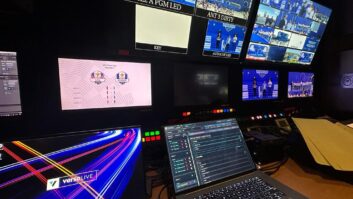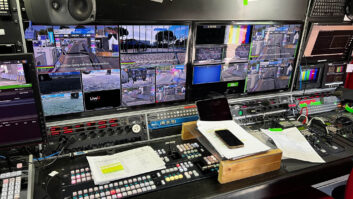The sports industry was severely impacted by the coronavirus pandemic, but it’s working to make a comeback. Football is one of the first sports to return – with the Bundesliga restarting in May, La Liga resumed on 15th June, and now the English Premier League is kicking off again – all in empty stadiums. Many other sports leagues around the world are hoping to shortly follow suit, and will similarly play without fans for the foreseeable future.
Among the many challenges that broadcasters face is capturing the excitement of live sports when a game is being played without spectators. Crowds play an important role in contributing to the atmosphere of live sports either as background or when capturing spectator reactions. The noise, the buzz, and the shared reactions help make the at-home viewing experience exciting and engaging. The loss of these sights and sounds will almost certainly have an impact on the experience of someone watching from their living room.
Live sports broadcasters now have an important role to play in offering sports fans an immersive viewing experience. They need to find new ways to recapture the shared emotion that underpins the excitement of live sports for fans watching at home. Those who do not look to innovate during these times risk reduced fan engagement and even a loss of viewers. Broadcasters should not only look to replace the atmosphere created by crowds but find new ways to enhance the at-home viewer experience.
OTT is uniquely positioned to allow for more interactive experiences thanks to its underlying technologies. However, before broadcasters rush to integrate applications to drive audience engagement, they need to ensure that they have the right streaming tools in place to support them. The lack of live sports has meant that there will be a surge in viewers tuning in for the Premier League and future sports leagues’ returns, so broadcasters need to be prepared for the high levels of traffic. It’s not only fans who would normally be watching the match in person who’ll be viewing it online, but die-hard football fans will also be joined by general sports fans that are desperate for some live sports action. In order to prepare for this influx, broadcasters must ensure that they have the bandwidth and capacity to deliver TV-like quality experiences to potentially millions of viewers. Alongside capacity, broadcasters need to also ensure reduced streaming latency, so the experience is as seamless as possible.
Once broadcasters are confident that they can deliver streams in real-time to each and every viewer, even when there are huge spikes in traffic, then they are ready to integrate new applications and features which will help recreate the live sports experience for viewers at home. We could also see some OTT providers allow for some form of sentiment capture from viewers and then feed that back into the broader experience, similar to how popular mobile live streaming apps communicate viewership and popularity back to viewers in the shared experience. Alternatively, they could provide viewers with the option to allow capturing of video from their device cameras to use for fan reaction shots. Fans will be introduced to new and improved viewing experiences as part of the new behind closed doors experience.
Verizon Media ran a 5G demo in the Hard Rock Stadium during Super Bowl LIV, with real-time streaming and multiple camera views enabling fans to see the action from a number of angles, all with sub one second latency. The potential for next-generation, live, highly personalised, and interactive in-home viewing experiences is more of a reality as we move into a 5G-enabled era and broadcasters should take advantage of its capabilities to engage with more viewers during this time of uncertainty.
While the absence of in-venue crowds will undoubtedly change the live sports experience, there is now an opportunity for broadcasters to demonstrate their creativity by finding new ways to keep sports fans fully immersed in the action and revolutionise fans’ at-home viewing experiences forever.





